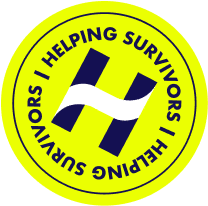What is Sexual Harassment?


Author: Kathryn Kosmides
Survivor Advocate
- Sexual harassment is a form of abuse that includes unwelcome sexual advances, requests for sexual favors, and other verbal or physical conduct of a sexual nature. It can impact anyone and can occur anywhere including public spaces, schools or universities, and workplaces.
- A significant portion of both women and men report experiencing some form of sexual harassment or assault in their lifetime, with verbal harassment being the most common. Bystander intervention can be a crucial way to support victims and prevent further harm.
- Your legal rights and options depend on when, where, and the circumstances surrounding the experience such as if it was in the workplace or by a stranger in public. You should reach out to an organization like Helping Survivors who can help you better understand the experience that happened to you.
Sexual Harassment is a Form of Abuse
Sexual harassment is a form of abuse prohibited under Title VII of the Civil Rights Act of 1964. It includes unwelcome sexual advances, requests for sexual favors, and other verbal or physical conduct of a sexual nature. It may occur in a variety of circumstances, is not limited to only the workplace, and victims are not limited to only women—men may be victims of sexual harassment as well.
Unfortunately, sexual harassment is quite common. A 2018 study by Stop Street Harassment cites, 81% of women and 43% of men reported experiencing some form of sexual harassment or assault. The study also found that:
- Verbal sexual harassment was the most common form, reported by 77% of women and 34% of men.
- Physically aggressive forms of sexual harassment were reported by 62% of women and 26% of men.
- Cyber sexual harassment was reported by 41% of women and 22% of men.
- Sexual assault was reported by 27% of women and 7% of men.
Statistics clearly indicate that sexual harassment is a major issue in today’s society. However, by taking action when it occurs, we can help support victims and prohibit perpetrators from abusing others.
We are here to listen and advocate for you.

What Does Sexual Harassment Look Like?
According to the Equal Employment Opportunity Commission, “sexual harassment is unwanted sexual advances, requests for sexual favors, and other verbal or physical harassment of a sexual nature in the workplace or learning environment. It may be happening to you or someone else and it’s important to know what sexual harassment can look like. Common examples of sexual harassment include:
- Requests for sexual favors, made jokingly or seriously
- Suggestive comments referring to sexual acts or orientation
- Unwelcome sexual advances, such as prolonged touching
- Feeling pressured to engage with someone sexually
- Receiving sexually explicit photos, emails, or text messages
- Talking about sexual fantasies or sharing sexual stories
- Sexual Harassment is a Form of Abuse
- What Does Sexual Harassment Look Like?
- What’s the Difference Between Sexual Harassment and Sexual Assault?
- Who Can be a Victim of Sexual Harassment?
- Where Does Sexual Harassment Happen?
- Negative Effects of Sexual Harassment on Victims
- What Should I do if I Experience Sexual Harassment?
- What Should I do If I See Sexual Harassment?
- Want To Speak With A Lawyer?
Sexual harassment can take form as many types of actions, both verbal and nonverbal. It may take on many different forms, and one incident can include one or more types. Other common forms of sexual harassment include:
- Stalking, following, or waiting outside someone’s workplace, home, or car
- Giving gifts that are sexually suggestive
- Repeatedly sending unwanted, abusive, or obscene messages
- Whistling, shouting, or making any kind of sexually suggestive sounds
What's the Difference Between Sexual Harassment and Sexual Assault?
While both sexual harassment and sexual assault have some features in common, there are also differences. As defined by the CDC, sexual harassment occurs through the use of sexual comments, spreading sexual rumors, or creating a sexually hostile climate.
In contrast, sexual assault involves non-consensual sexual activity or contact. It may happen through the use of physical force or threats of force, or by giving the victim drugs or alcohol as part of the assault.
Sexual harassment is often used to refer to verbal or non-verbal sexual innuendo or actions that occur in the workplace; though in reality, sexual harassment can occur in any environment. In contrast, sexual assault involves physical sexual activity or contact that occurs without consent.
Sexual harassment generally violates civil laws but is not a criminal act in many cases. However, sexual assault usually refers to acts that are criminal in nature. Some forms of sexual assault include attempted rape or forcing someone to perform sexual acts.
Who Can be a Victim of Sexual Harassment?
Anyone can be a victim of sexual harassment. While studies consistently show that women experience sexual harassment at more prevalent rates, men can also experience sexual harassment, with 34% of surveyed men citing experiencing verbal sexual harassment in their lifetime. It impacts nearly every community and affects people of all genders, sexual orientations, economic statuses, and ages.
A sexual harasser may be someone the victim knows such as a coworker, teacher, boss, or peer. It may occur in person or online, and can include things such as by posting or sharing pictures of someone without their consent, asking for sexual favors for career advancement, or making comments in sexual nature about someone’s appearance..
percentage of the women say they’ve been been sexually harassed at work.
percentage of men say they’ve been sexually harassed at work.
Where Does Sexual Harassment Happen?
Sexual harassment can occur anywhere. Common places where sexual harassment may occur include:
Workplace
Schools or universities
Shopping centers
Neighborhood parks or streets
Online via social media and other online platforms
Through text messages or phone calls
Restaurants or bars
There are many different scenarios that may lead to sexual harassment. Due to the frequency of lawsuits regarding sexual harassment in the workplace, many companies ban sexual relationships between colleagues, even if such relationships are consensual.
Negative Effects of Sexual Harassment on Victims
Experiencing sexual harassment may lead some survivors to face emotional, physical, or mental health concerns both during and after the sexual harassment occurs. These impacts can be amplified if the sexual harassment is ongoing or it escalates, such as sexual harassment in the workplace.
Emotional Effects of Sexual Harassment
Emotional effects associated with sexual harassment may include:
- Anger
- Fear
- Humiliation
- Shame
- Guilt
- Betrayal
- Violation
- Powerlessness and loss of control
Although sexual harassment may not always leave physical marks, the emotional consequences may be severe, especially if harassment occurs over a prolonged period of time.
Mental Health Effects of Sexual Harassment
Sexual harassment may lead to mental health effects such as:
- Anxiety
- Depression
- Panic attacks
- PTSD
- Difficulty concentrating
- Loss of motivation
- Substance abuse
- Suicidal ideation
If a mental health condition develops as the result of sexual harassment, the individual may seek therapy or counseling.
Physical Effects of Sexual Harassment
Alongside emotional and mental health conditions, the physical effects of sexual harassment may include:
- Increased stress levels
- Headaches
- Fatigue
- Sleep disturbances
- Eating disturbances
The physical effects of sexual harassment may require medical treatment or counseling.
What Should I do if I Experience Sexual Harassment?
There are a variety of things you can do if you experience sexual harassment. If you feel you are a victim of sexual harassment, it may be helpful to inform the harasser directly that you feel uncomfortable and would prefer for the conduct to stop, but only if you feel safe doing so.
There is a possibility that they did not intend to offend or disturb you, and they may be genuinely apologetic. However, if the harassment continues or if you do not feel safe confronting the harasser, there are alternative or additional actions you can take.

Experiencing sexual harassment in the workplace is a deeply distressing and challenging situation that nobody should have to endure. Managers hold positions of power over employees, which can make it difficult to speak up. It takes immense courage to come forward and report such incidents, and it is crucial to approach the process with empathy, care, and consideration. Reporting sexual empathy, care, and consideration. Reporting sexual harassment is not typically an easy decision as you may be in fear of your job, of retaliation or alienation within the company, or not being believed. Many victims of sexual harassment will choose not to report and may choose to either try to find another job or role to not have to work with the perpetrator. It is the unfortunate reality that the burden to report is on victims, and that the experience can often be difficult in many ways.
Your mental, emotional, and physical well-being should always come first. Seek support from trusted friends, family members, or professional counselors who can provide a safe space for you to express your feelings and concerns. Remember that you are not alone, and there are people who genuinely care about your well-being. It can be helpful to have this safe space to express and process your emotions around the experience which can make the reporting easier.
You may also want to consider speaking to a sexual harassment attorney who will be able to help you file a lawsuit for sexual harassment.
It is essential to gather as much evidence as possible to support your case. Keep a detailed record of each incident, noting dates, times, locations, and any witnesses present. Preserve any emails, text messages, or other written communications that pertain to the harassment. This documentation will be invaluable when discussing the issue with your employer or when pursuing legal action.
Then, you should familiarize yourself with your jurisdiction’s (such as federal, state, and county laws surrounding sexual harassment) and organization’s policies and procedures on sexual harassment. These policies typically outline the steps to follow when reporting such incidents. Take note of any reporting channels, including the names and contact information of the appropriate individuals, such as HR representatives or designated investigators.
Prior to talking to HR, you may want to speak to a lawyer. Law firms who handle sexual harassment will often offer a free consultation call to help you understand your experience and legal options. Contacting a lawyer prior to going to HR can also help you gain answers to any questions you may be unclear about regarding your experience or your company’s policies.
Select someone within your organization whom you trust and feel comfortable confiding in, such as a supervisor, HR representative, or an employee assistance program (EAP) counselor. This person can guide you through the reporting process, provide support, and advocate on your behalf if necessary.
While it is generally recommended to report incidents of sexual harassment as soon as possible, it is crucial to report when you feel ready. Trust your instincts and proceed at a pace that feels right for you. Remember that there is no set timeline for coming forward, and your well-being should always be the primary consideration.
If and when you decide you are ready to report, clearly articulate your experiences and concerns to the appropriate person or department. Describe the incidents objectively, focusing on the specific behaviors or actions that made you feel uncomfortable or violated. Providing this information will kick off an official investigation and may require several follow up meetings and sharing additional information or details about the sexual harassment.
After filing an initial report of sexual harassment in the workplace, it is important to understand the typical process that may unfold. While the specific steps may vary depending on the organization, here are some general expectations.
1. Confidentiality and investigation
Once your report is filed, your employer should handle it with the utmost confidentiality. They may assign an internal investigator or external specialist to conduct a thorough and impartial investigation. This investigator will likely reach out to you to gather more information about your experiences and any evidence you have provided.
2. Support and resources
Throughout the investigation, your employer should offer you support and access to resources to help you cope with the situation. This may include counseling services, employee assistance programs, or referrals to external support organizations. You can choose to utilize these resources or use your own such as a counselor or therapist.
3. Witness interviews
The investigator will likely interview any witnesses you identified in your report, as well as other individuals who may have relevant information. These interviews aim to gather different perspectives and corroborate the facts surrounding the incidents of harassment. Witnesses will be asked to provide their observations, document any evidence they may have, and answer questions related to the incidents.
4. Thorough documentation
The investigator will meticulously document all the evidence, testimonies, and findings throughout the investigation. This documentation is essential to maintain a comprehensive record of the case and ensure a fair and thorough assessment.
5. Determination of findings
Once the investigation is complete, the investigator will analyze all the evidence and testimonies to determine whether the reported sexual harassment occurred and whether it violates company policies or laws. They will typically provide written report outlining their findings and recommendations.
6. Disciplinary action and corrective measures
If the investigation confirms that sexual harassment took place, your employer should take appropriate action based on the severity of the harassment and their policies. This may involve disciplinary measures, such as reprimanding or terminating the harasser, or implementing corrective actions, such as additional training or policy revisions to prevent future incidents.
7. Follow-up and ongoing support
Your employer should follow up with you after the investigation to discuss the findings, any actions taken, and steps for moving forward. They should also continue to offer support and monitor the workplace environment to ensure that you ate not subjected to any retaliation or further harassment.
It is important to remember that the process may take time, as thorough investigations require careful consideration of all the facts and parties involved. It is crucial to maintain open lines of communication with your employer or the investigator throughout the process, seeking clarification or updates as needed. If you have concerns about the handling of the investigation or any subsequent actions taken, you may consider seeking legal advice to understand your rights and options.
Remember, reporting sexual harassment takes tremendous strength, and you deserve to be heard, supported, and treated with respect throughout the process. Seek out allies, whether within your organization or external support systems, to provide the empathy and understanding you need as you navigate this challenging journey.
Workplaces and universities may offer hotlines to report sexual harassment. You can use these to file a report. You may also choose to tell a parent, a coach, or the police if you believe you’re in danger or the person has escalated their behavior into criminal behavior. If the harassment is serious enough, you may seek the assistance of a legal advisor.
What Should I do If I See Sexual Harassment?
If you see sexual harassment taking place, you may attempt to intervene through a method referred to as bystander intervention. This intervention involves you stepping in to help if you see someone who may be in danger or at risk of being sexual harassed.
You can offer to help in a way that is appropriate to the situation. If you choose to help, you may be able to give the person a way to leave the situation. The Rape, Abuse & Incest National Network (RAINN) and Times Up, a nonprofit dedicated to combatting abuse, has released recommended intervention strategies that can help the victim while also keeping you safe.
Create a Distraction
Try to do whatever you can to interrupt the situation and harassment occurring by distracting those who are involved in the harassment. However, make sure that you aren’t putting yourself or the person experiencing the harassment in danger. If someone seems like they may become violent, don’t draw their attention in a negative way that could cause them to escalate further.
Ask Directly
You can ask the victim directly what they want and/or need. If the harassment is happening at work or school, offer to accompany the victim any time they need to meet with the harasser or when reporting to HR.
Refer to an Authority
The safest way to intervene may be to bring in an authority figure. Oftentimes, those who have authority will be willing to step in if they are aware of the situation. You should work with the person who experienced the harassment on what they would like to do, including what authority, if any, they’d like to contact.
Enlist Others
It can be hard to step in alone, especially if you are worried for your own safety. If you can, ask for the help of someone nearby or from a friend, colleague, or another random bystander. Your support can help the victim and prevent future harm from occurring.
Want To Speak With A Lawyer?




